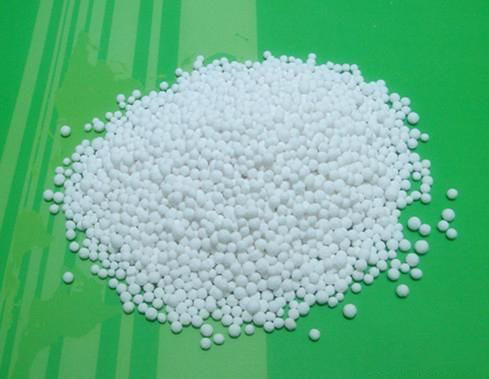Exploring the Future of Energy: The Role of Raw Energy Materials
The Role of Raw Energy Materials: In a world where energy consumption is continuously on the rise, the future of energy has become a topic of utmost importance. As we strive to find sustainable and efficient solutions to meet the growing demand, the role of raw materials takes center stage. Raw materials such as lithium, cobalt, and rare earth metals have become crucial components in the development of renewable energy technologies like solar panels and electric vehicle batteries. However, their availability and environmental impact raise questions about the long-term feasibility of these solutions. Join us on a journey as we explore the future of energy and delve into the intricate relationship between raw materials, innovation, and sustainability. Discover how advancements in technology and resource management can shape a greener future and pave the way for a more sustainable energy landscape.
Understanding raw materials in the context of energy production
To comprehend the significance of raw materials in the energy sector, it is essential to understand their role in energy production. Raw materials are the foundation upon which renewable energy technologies are built. They serve as the building blocks for solar panels, wind turbines, and electric vehicle batteries. For instance, lithium-ion batteries, which power electric vehicles, rely heavily on raw materials like lithium, cobalt, and nickel. These materials provide the necessary energy storage capacity, enabling electric vehicles to function effectively. Similarly, solar panels are made up of silicon, a raw material that converts sunlight into electricity. Without these raw materials, the development and deployment of renewable energy technologies would be severely hindered.
The demand for raw materials in the energy sector has increased exponentially in recent years. As countries worldwide transition towards cleaner energy sources, the need for renewable energy technologies has skyrocketed. This surge in demand has put pressure on the availability and accessibility of raw materials, making their responsible sourcing and sustainable extraction practices more important than ever.
Key raw materials in renewable energy technologies
Several raw materials play a crucial role in the development of renewable energy technologies. Lithium, one of the most widely used raw materials, is a key component in lithium-ion batteries. These batteries power electric vehicles and store energy from renewable sources like solar and wind. Cobalt, another essential raw material, is used in the cathodes of lithium-ion batteries. It contributes to the stability and performance of the batteries, ensuring efficient energy storage.
Rare earth metals, although not as well-known, are equally vital in renewable energy technologies. Neodymium and dysprosium, two rare earth metals, are used in the production of permanent magnets. These magnets are essential in wind turbines, as they convert kinetic energy into electrical energy. Additionally, rare earth metals are used in electric vehicle motors and energy-efficient lighting.
The extraction and processing of these raw materials come with their own set of challenges. Lithium, for example, is primarily obtained from brine deposits or hard rock mineral sources. The extraction process can be water-intensive and may have adverse environmental impacts if not managed responsibly. Cobalt mining, particularly in certain regions, has raised concerns about human rights violations and child labor. The extraction of rare earth metals is also associated with environmental challenges, including radioactive waste and water pollution. Addressing these issues and finding sustainable alternatives are crucial for the long-term viability of renewable energy technologies.

The importance of responsible sourcing and sustainable extraction practices
Responsible sourcing and sustainable extraction practices are vital to ensure the ethical and environmentally friendly production of raw materials. With the increasing demand for raw materials in the energy sector, it is essential to prevent negative impacts on local communities and the environment. Stakeholders, including governments, companies, and consumers, must work together to promote transparency and accountability throughout the supply chain.
One approach to responsible sourcing is the implementation of certification systems. These systems verify that raw materials are produced in an ethical and sustainable manner. For example, the Responsible Minerals Initiative (RMI) certifies minerals and metals that are sourced responsibly, including those used in renewable energy technologies. By supporting certified raw materials, companies can demonstrate their commitment to sustainability and encourage responsible practices in the industry.
Sustainable extraction practices are equally important in minimizing the environmental footprint of raw material production. This involves reducing water usage, minimizing energy consumption, and implementing proper waste management. Additionally, efforts should be made to rehabilitate and restore areas affected by mining activities. By adopting sustainable practices, the negative impacts of raw material extraction can be mitigated, paving the way for a more sustainable energy future.
Challenges and opportunities in securing raw materials for the energy transition
Securing a reliable and sustainable supply of raw materials is a significant challenge in the energy transition. The availability of certain raw materials, such as lithium and cobalt, is limited, and their extraction can be geopolitically complex. As the demand for these materials continues to rise, there is a need to diversify the sources and reduce dependence on a few countries or regions.
One opportunity lies in exploring alternative raw materials that are more abundant and environmentally friendly. For example, research is being conducted on sodium-ion batteries as an alternative to lithium-ion batteries. Sodium is more abundant and widely available, potentially reducing reliance on scarce lithium resources. Similarly, efforts are underway to develop new materials for wind turbine magnets that do not rely on rare earth metals, thereby reducing supply chain vulnerabilities.
Recycling is another avenue for securing raw materials in a more sustainable manner. By recycling used batteries and other electronic waste, valuable materials can be recovered and reused, reducing the need for new extraction. Investing in recycling infrastructure and implementing effective recycling programs can help close the loop and create a circular economy for raw materials.
Technological advancements in raw material extraction and processing
Advancements in technology are revolutionizing the way raw materials are extracted and processed. These innovations aim to improve efficiency, reduce environmental impact, and increase resource recovery. One such advancement is the use of advanced analytics and machine learning in mining operations. By analyzing vast amounts of data, mining companies can optimize their operations, reduce waste, and minimize environmental disturbances.
In-situ mining is another technology that shows promise in the extraction of raw materials. This method involves the injection of chemicals into the ground to dissolve and extract the desired minerals. Compared to traditional mining methods, in-situ mining has the potential to be less invasive and more environmentally friendly.
Additionally, advancements in processing techniques are enabling the extraction of raw materials from lower-grade ores. This helps reduce the need for high-grade deposits and expands the resource base. For example, hydrometallurgical processes use chemical solutions to extract valuable metals from low-grade ores, making previously uneconomical deposits viable.

Government policies and regulations shaping the future of raw materials in energy
Government policies and regulations play a crucial role in shaping the future of raw materials in the energy sector. They can incentivize responsible sourcing practices, promote recycling, and support research and development of alternative materials. For instance, some governments have implemented regulations to ensure the responsible sourcing of minerals, particularly those associated with human rights abuses and environmental damage.
Incentive programs and subsidies can also encourage the development and deployment of technologies that reduce raw material dependency. Governments can provide financial support to companies and research institutions working on alternative materials and recycling technologies. By fostering innovation and creating a favorable market environment, governments can accelerate the transition to a more sustainable energy future.
International collaboration is also essential in addressing raw material challenges. Cooperation between countries can help ensure a fair and equitable distribution of resources, reduce geopolitical tensions, and promote responsible practices globally. By working together, governments can create a more stable and sustainable raw material supply chain.
Innovations in recycling and circular economy for raw materials
The concept of a circular economy is gaining traction as a solution to the challenges associated with raw material supply. In a circular economy, resources are kept in use for as long as possible, with waste being minimized and materials being recycled and reused. This approach reduces the need for virgin raw materials and minimizes environmental impact.
In the context of raw materials for energy production, recycling plays a crucial role. By recycling batteries and electronic waste, valuable materials like lithium, cobalt, and rare earth metals can be recovered and reintroduced into the supply chain. This reduces the demand for new extraction and minimizes the environmental and social impacts associated with mining.
Innovations in recycling technologies are making it increasingly efficient to recover materials from complex products. For example, hydrometallurgical processes are being used to extract metals from batteries, while mechanical recycling techniques are being employed to recover valuable components from electronic waste. These advancements in recycling technologies are essential for creating a sustainable and circular economy for raw materials.

The role of research and development in finding alternative raw materials
Research and development (R&D) play a pivotal role in finding alternative raw materials and reducing dependence on scarce resources. R&D efforts focus on discovering new materials, improving existing technologies, and developing more sustainable extraction and processing methods.
One area of research is focused on finding alternative materials for energy storage. Scientists are exploring materials like sodium, magnesium, and aluminum as potential alternatives to lithium in batteries. These materials are more abundant and widely available, reducing concerns about resource scarcity.
Another area of research is aimed at developing new materials for wind turbine magnets. Researchers are investigating alternative materials for magnets that do not rely on rare earth metals, which are often sourced from politically unstable regions. By finding alternatives, the supply chain vulnerabilities associated with rare earth metals can be mitigated.
Furthermore, research is being conducted on improving the efficiency of raw material extraction and processing. By developing new techniques and technologies, the environmental impact of mining can be minimized, and resource recovery can be optimized. R&D efforts are crucial for driving innovation and finding sustainable solutions to raw material challenges.
Conclusion: Embracing a sustainable and diversified raw material supply for a greener energy future
The future of energy relies heavily on the availability and responsible sourcing of raw materials. As the demand for renewable energy technologies continues to grow, it is crucial to ensure a sustainable and diversified supply of raw materials. Responsible sourcing practices, sustainable extraction methods, and advancements in recycling technologies are essential in minimizing environmental impact and reducing dependence on scarce resources.
Technological advancements and research and development efforts are driving innovation in raw material extraction, processing, and alternative materials. These advancements not only improve efficiency but also pave the way for a greener and more sustainable energy future.
Government policies and international collaboration are vital in shaping the future of raw materials in the energy sector. By implementing regulations, providing incentives, and fostering cooperation, governments can create a favorable environment for responsible practices and innovation.
Embracing a circular economy and investing in recycling infrastructure are also key in securing a sustainable and diversified raw material supply. By keeping resources in use for as long as possible and minimizing waste, the environmental and social impacts associated with raw material extraction can be reduced.
In conclusion, the future of energy depends on our ability to embrace sustainable practices, diversify our raw material supply, and invest in research and development. By doing so, we can create a greener and more sustainable energy landscape for future generations.
